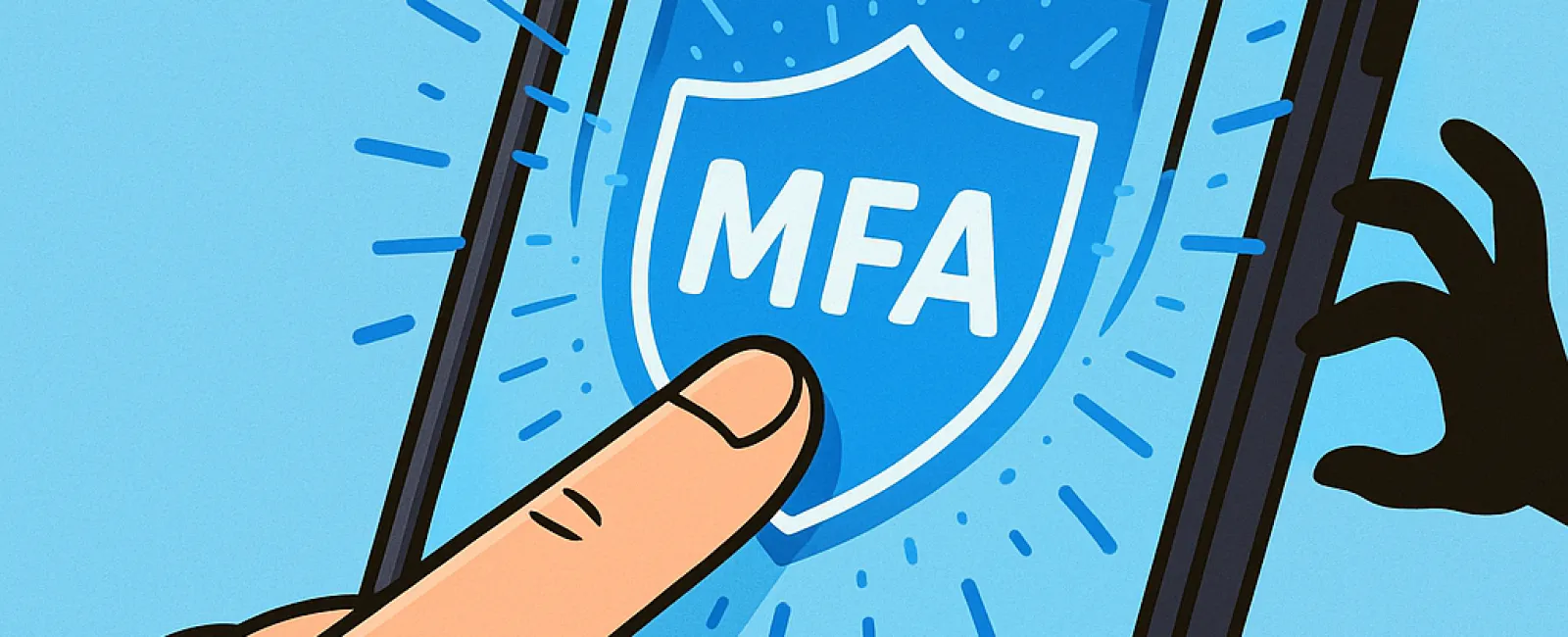October 27, 2025
Driving without a seat belt or leaving your office unlocked overnight sounds illogical, right? So why risk logging in online without multifactor authentication (MFA)?
MFA acts as a powerful second barrier to your digital presence. Instead of relying solely on a password—which can be easily guessed, stolen, or phished—it adds an additional verification step, such as a text message code, an authenticator app, or a fingerprint scan. This way, even if a cybercriminal obtains your password, without the extra layer they won't get access.
Why One Extra Step is a Game-Changer
Think of your password as locking your front door. Using MFA is like also setting your home alarm system. While you might get by without it, isn't it reassuring to have backup protection if one layer fails?
That's exactly what MFA provides: a simple, quick additional step to verify your identity each time you log in. Whether it's called "two-step verification," "two-factor authentication," or a "one-time password," the concept remains the same—requiring two or more factors to prove you're really you before granting access to sensitive information.
MFA comes in various forms, including confirmation emails during account setup, bank security questions, text message codes, push notifications, and phone call verifications. Most of these can be completed with just a tap or quick input.
Everyday Scenarios Where MFA Protects You
From your perspective, MFA is seamless—just enter a code or tap a button and you're done. But it's a formidable hurdle for hackers. When someone tries to break into your account, MFA triggers a notification or a code requirement that alerts you immediately, allowing you to change your password before any data is compromised. This proactive defense prevents most breaches before they happen.
Additionally, MFA stops unauthorized access even if a password is stolen or an employee is deceived into sharing their login information. Research from Microsoft reveals that enabling MFA lowers the risk of account compromise by over 99.2%, and for accounts with MFA enabled, the risk drops by 99.99%—making it one of the most effective cybersecurity measures you can adopt.
Where to Enable MFA and How to Get Started
Focus on securing these critical areas with MFA:
- Online banking and financial platforms
- Email accounts and cloud storage services
- Social media profiles
- Workplace logins that access client or proprietary data
Setting up MFA is simple and supported by most leading platforms. Choose the method that suits you best and incorporate it into your daily routine. For businesses, implementing an authenticator app adds an extra shield for employee logins.
In short, MFA is a quick, free, and crucial step to prevent most account breaches. Taking just a few minutes today to activate MFA can save you from months—or even years—of costly remediation and data loss.
The easiest way to get MFA up and running is by reaching out to your IT provider. A skilled managed service provider (MSP) can ensure smooth and effective setup. If you need expert guidance on cybersecurity, click here or call us at (973) 575-4950 to schedule a Consultation with our team now.
